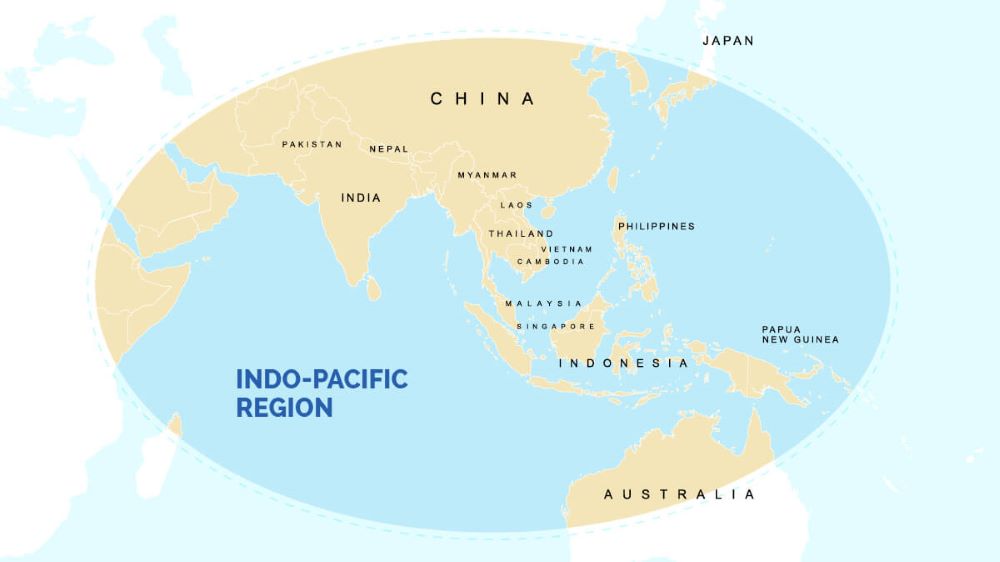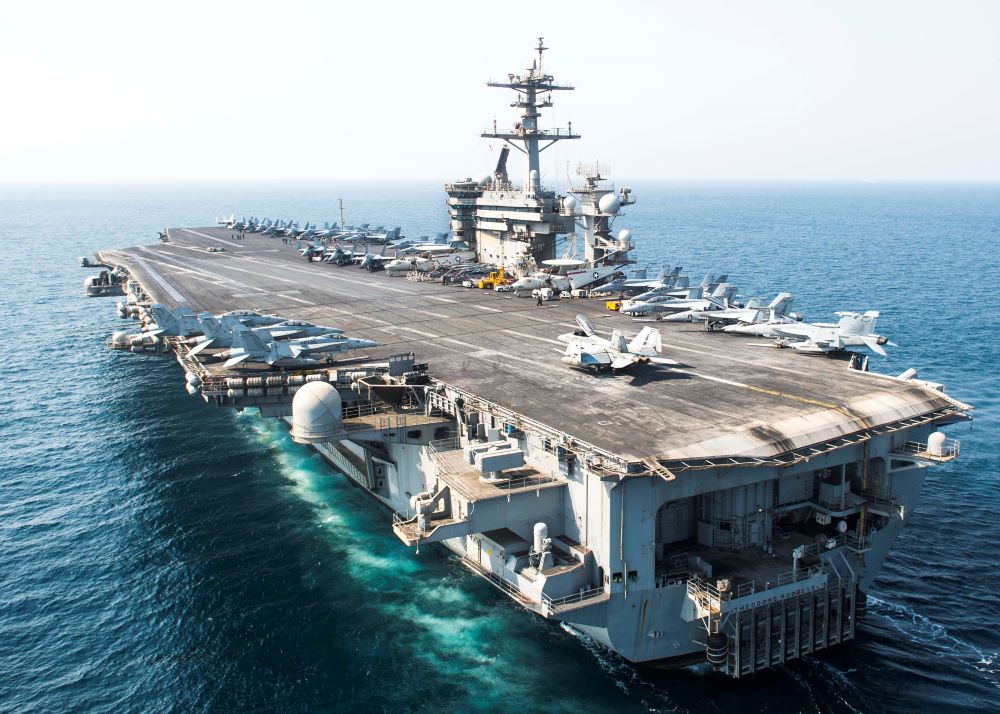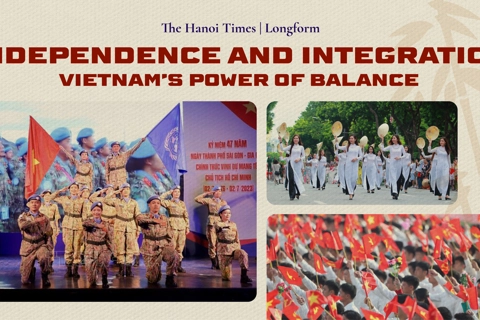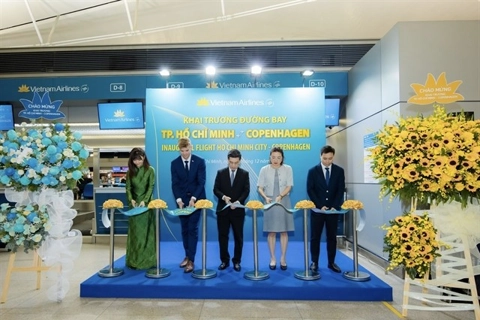US new Indo-Pacific Strategy emphasizes joint strengths
Washington affirmed its long-term position and commitment to the Indo-Pacific, focusing on every corner of the region, regarding Northeast Asia, Southeast Asia, South Asia, and Oceania.
The Biden-Harris Administration has announced its latest Indo-Pacific Strategy in which the US is committed to an Indo-Pacific that is free and open, connected, prosperous, secure, and resilient.
“The future of each of our nations – and indeed the world – depends on a free and open Indo-Pacific enduring and flourishing in the decades ahead,” US President Joe Biden said at the Quad Leaders’ Summit on September 24, 2021.
| Indo-Pacific stretches from the Pacific coastline to the Indian Ocean, home to more than half of the world’s people. |
To pursue the strategy, Washington will strengthen its own role while reinforcing the region itself, saying that changing strategic circumstances and historic challenges require unprecedented cooperation with those who share in this vision.
In the document released on February 11, the White House said under President Biden, “the US is determined to strengthen its long-term position in and commitment to the Indo-Pacific, focusing on every corner of the region, from Northeast Asia and Southeast Asia to South Asia and Oceania, including the Pacific Islands.”
As the next decade holds considerable promise and historic obstacles for the Indo-Pacific, the American role in the region must be more effective and enduring than ever, the White House affirmed. To do this, they will modernize long-standing alliances, strengthen emerging partnerships, and invest in regional organizations—the collective capacity that will empower the Indo-Pacific to adapt to the 21st century’s challenges and seize its opportunities.
Among different parts of the Indo-Pacific, the US sees Southeast Asia as central to the regional architecture.
| The aircraft carrier USS Theodore Roosevelt (CVN 71) transits the Arabian Gulf in 2015. Photo: US Navy |
In the long run, the US affirmed it will pursue five objectives namely advancing a free and open Indo-Pacific, building connections within and beyond the region, driving regional prosperity, bolstering Indo-Pacific security, and building regional resilience to transnational threats—each in concert with its allies and partners, as well as with regional institutions.
Free and open
Washington said its vital interests and those of its closest partners require a free and open Indo-Pacific, and a free and open Indo-Pacific requires that governments can make their own choices and that shared domains are governed lawfully. They will advance a free and open region, including by: Investing in democratic institutions, a free press, and a vibrant civil society; Improving fiscal transparency in the Indo-Pacific to expose corruption and drive reform; Ensuring the region’s seas and skies are governed and used according to international law; Advancing common approaches to critical and emerging technologies, the internet, and cyber space.
Connected
The US believed that a free and open Indo-Pacific can only be achieved if they build collective capacity for a new age. In this regard, they will build collective capacity within and beyond the region, including by: Deepening our five regional treaty alliances with Australia, Japan, the Republic of Korea (ROK), the Philippines, and Thailand; Strengthening relationships with leading regional partners, including India, Indonesia, Malaysia, Mongolia, New Zealand, Singapore, Taiwan, Vietnam, and the Pacific Islands; Contributing to an empowered and unified ASEAN; Strengthening the Quad and delivering on its commitments; Supporting India’s continued rise and regional leadership; Partnering to build resilience in the Pacific Islands; Forging connections between the Indo-Pacific and the Euro-Atlantic; Expanding US diplomatic presence in the Indo-Pacific, particularly in Southeast Asia and the Pacific Islands.
Prosperous
The prosperity of Americans is linked to the Indo-Pacific. That fact requires investments to encourage innovation, strengthen economic competitiveness, produce good-paying jobs, rebuild supply chains, and expand economic opportunities for middle-class families. Accordingly, they will drive Indo-Pacific prosperity, including by: Proposing an Indo-Pacific economic framework, by developing new approaches to trade that meet high labor and environmental standards; Promoting free, fair, and open trade and investment through the Asia-Pacific Economic Cooperation (APEC), including in our 2023 host year; Closing the region’s infrastructure gap through Build Back Better World with G7 partners.
Secure
The US said the drive will draw on all instruments of power to deter aggression and to counter coercion, including by: Advancing integrated deterrence; Deepening cooperation and enhancing interoperability with allies and partners; Maintaining peace and stability across the Taiwan Strait Innovating to operate in rapidly evolving threat environments, including space, cyberspace, and critical- and emerging-technology areas; Strengthening extended deterrence and coordination with our ROK and Japanese allies and pursuing the complete denuclearization of the Korean Peninsula; Continuing to deliver on AUKUS; Expanding U.S. Coast Guard presence and cooperation against other transnational threats; Working with Congress to fund the Pacific Deterrence Initiative and the Maritime Security Initiative.
Resilience
The Indo-Pacific faces major transnational challenges. Therefore, they will build regional resilience to 21st-century transnational threats, including by Working with allies and partners to develop 2030 and 2050 targets, strategies, plans, and policies consistent with limiting global temperature increase to 1.5 degrees Celsius; Reducing regional vulnerability to the impacts of climate change and environmental degradation; Ending the Covid-19 pandemic and bolstering global health security.
The Indo-Pacific region, stretching from the Pacific coastline to the Indian Ocean, is home to more than half of the world’s people; 60% of global GDP, two thirds of global economic growth; 65% of the world’s oceans and 25% of its land; and seven of the world’s largest militaries.













